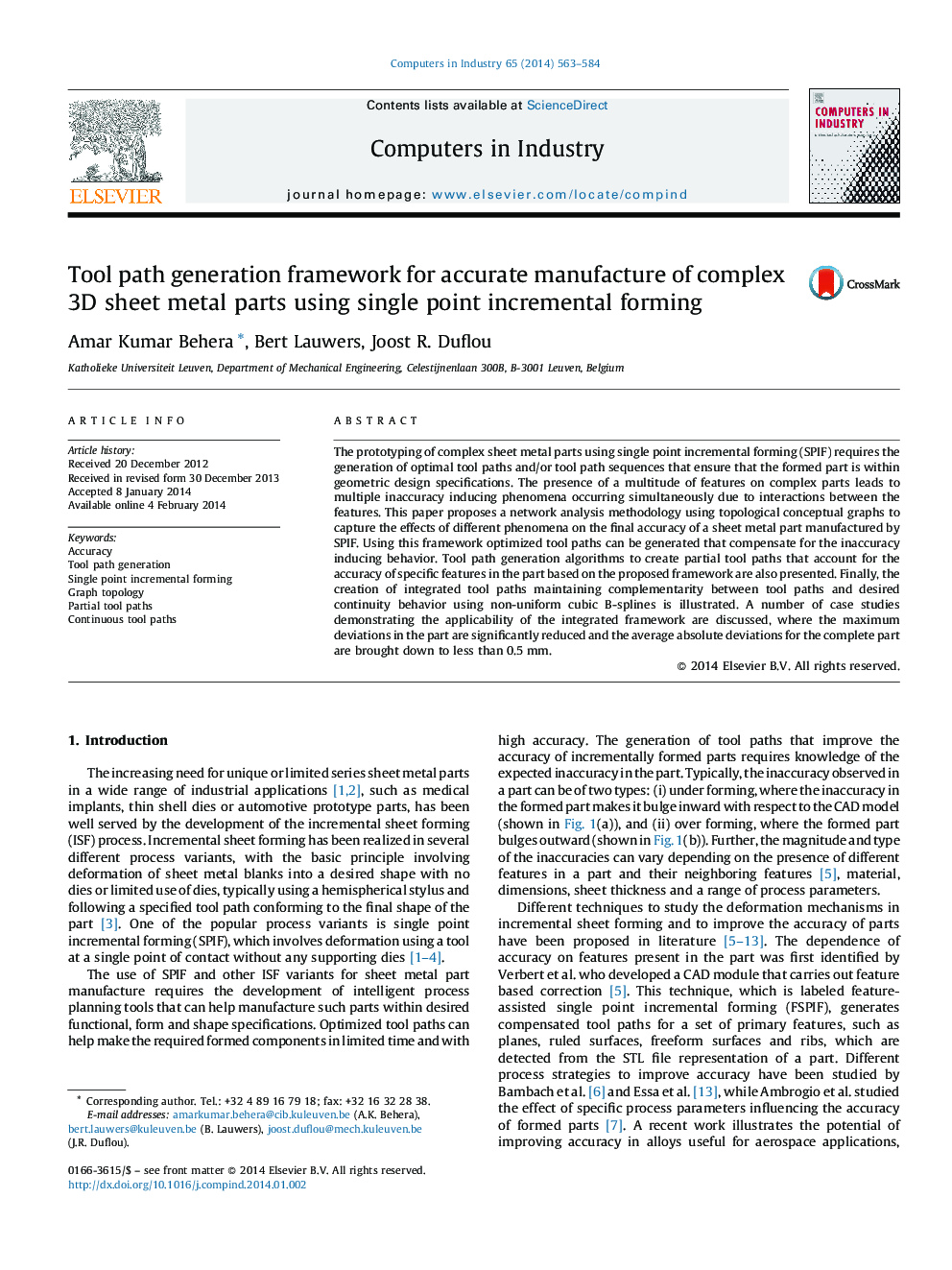| Article ID | Journal | Published Year | Pages | File Type |
|---|---|---|---|---|
| 508876 | Computers in Industry | 2014 | 22 Pages |
•Conceptual graphs were used to develop tool paths for incremental forming.•Tool paths were optimized for accuracy behavior.•Partial tool paths were used to improve accuracy.•Algorithms for tool path generation, sequencing and integration are presented.•Complex parts were manufactured with high accuracy.
The prototyping of complex sheet metal parts using single point incremental forming (SPIF) requires the generation of optimal tool paths and/or tool path sequences that ensure that the formed part is within geometric design specifications. The presence of a multitude of features on complex parts leads to multiple inaccuracy inducing phenomena occurring simultaneously due to interactions between the features. This paper proposes a network analysis methodology using topological conceptual graphs to capture the effects of different phenomena on the final accuracy of a sheet metal part manufactured by SPIF. Using this framework optimized tool paths can be generated that compensate for the inaccuracy inducing behavior. Tool path generation algorithms to create partial tool paths that account for the accuracy of specific features in the part based on the proposed framework are also presented. Finally, the creation of integrated tool paths maintaining complementarity between tool paths and desired continuity behavior using non-uniform cubic B-splines is illustrated. A number of case studies demonstrating the applicability of the integrated framework are discussed, where the maximum deviations in the part are significantly reduced and the average absolute deviations for the complete part are brought down to less than 0.5 mm.
